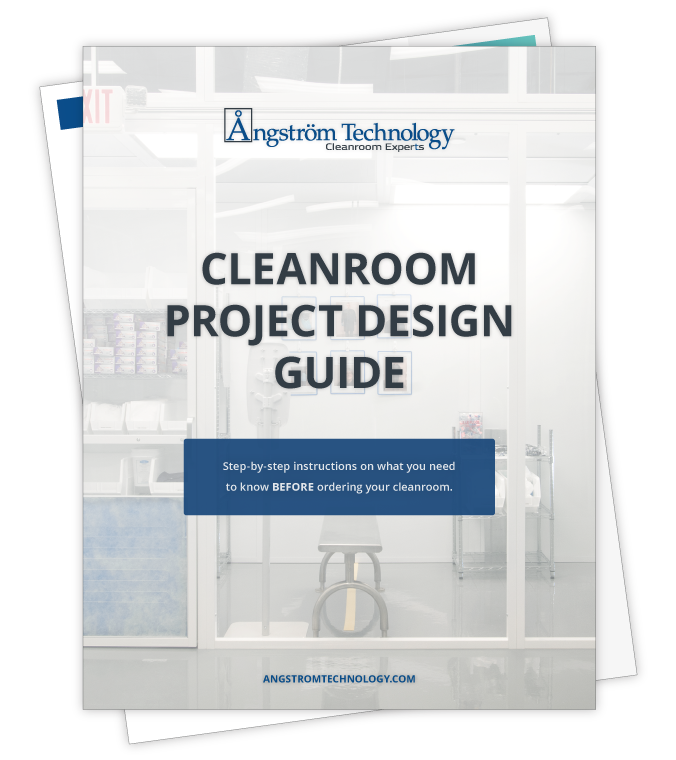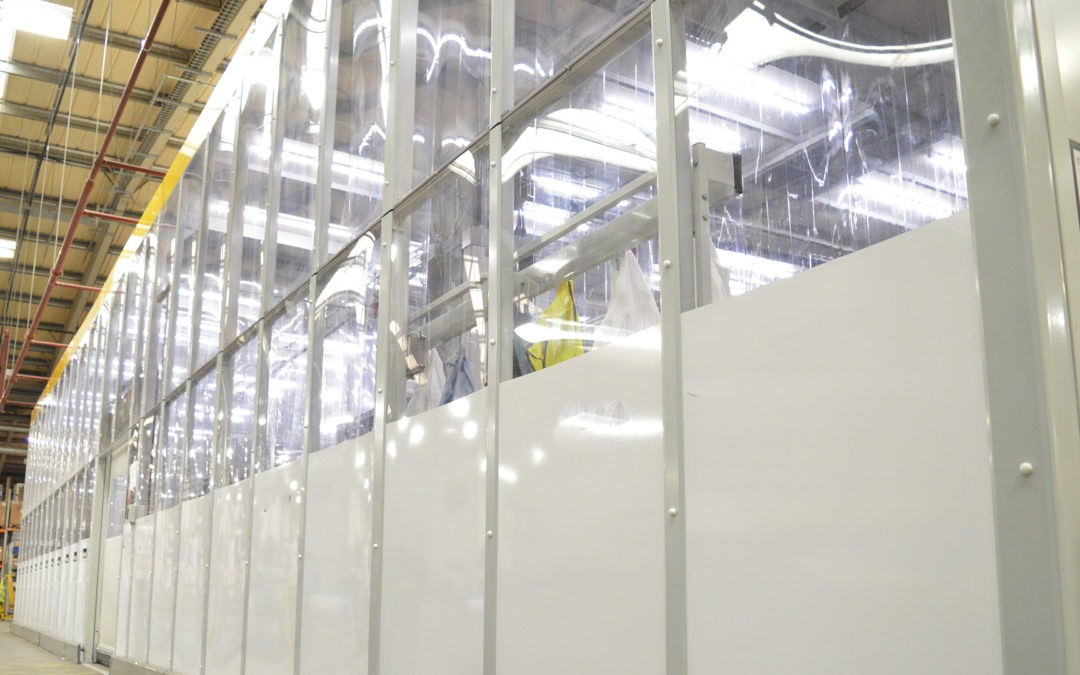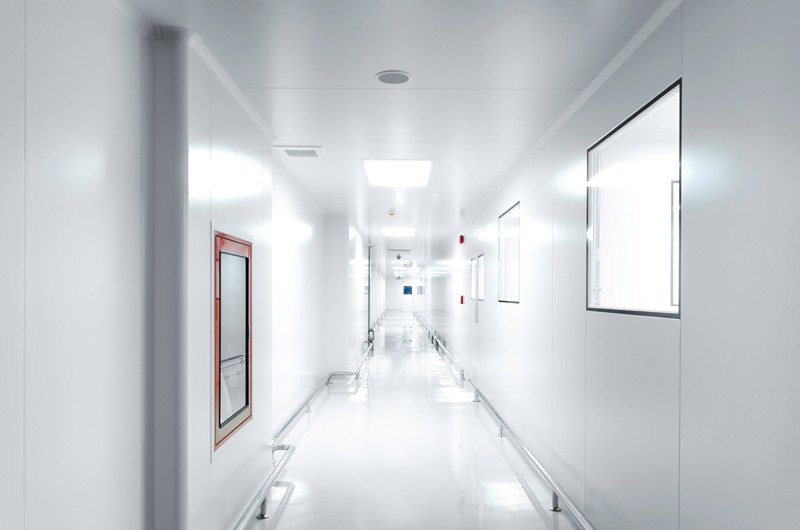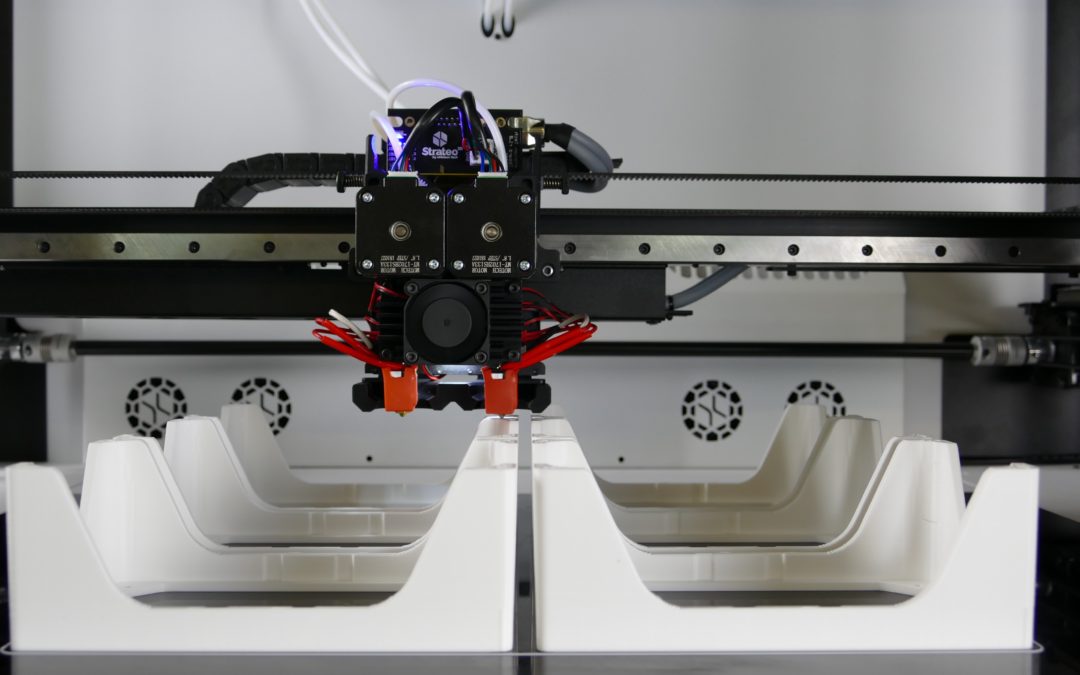
Cleanroom Construction in your Existing Structure
Constructing a cleanroom in any space is a major advantage of the modular cleanroom building process. Let’s look at where you can build a cleanroom in your current space and what that process looks like.
WHERE CAN YOU CONSTRUCT A CLEANROOM?
Retrofit cleanrooms can achieve any ISO cleanroom classification, and construction can happen in various spaces. However, the best type of cleanroom for each space may differ. Let’s take a look at three examples.
1. CLEANROOM CONSTRUCTION IN A LARGE INDUSTRIAL SPACE
If you’d like to construct a cleanroom in a large space such as a warehouse, you have a lot of freedom when it comes to the square footage and layout of your cleanroom. Although you have plenty of space, it’s important only to build the cleanroom as large as it needs to be. This will not only save you money on materials during cleanroom construction but will also cut down energy usage once the cleanroom is in operation.
In a large space, you can suspend modular cleanroom panels from a strong ceiling grid or build a freestanding cleanroom. Your cleanroom can also be constructed to include existing walls, utilize light from existing windows, and even connect to the utilities of the building — as long as they meet your cleanroom classification requirements. Any type of modular cleanroom is suitable for a large space, so you can choose between a HardWall, SoftWall, RigidWall, or Seamless cleanroom — whatever will be best for your application.
2. CLEANROOM CONSTRUCTION IN SMALL SPACES
Although large spaces offer plenty of room to spread out, don’t discount smaller spaces for cleanroom construction. A flexible modular cleanroom type — such as SoftWall cleanrooms — can be highly effective in a tighter space. SoftWall modular cleanroom panels can be arranged into more condensed layouts than their HardWall or RigidWall counterparts while still achieving ISO Classes 4-8.
Additionally, the modular design means SoftWall cleanrooms can be set up quickly, easily reconfigured or taken down and stored, and moved virtually anywhere you need a cleanroom.
3. OFFICE SPACE TO CLEANROOM CONVERSION
Unused office space presents a great opportunity when looking for space to install a new cleanroom. A new cleanroom design can incorporate many elements of the existing structure. Depending on your cleanroom’s requirements, you may be able to use an existing ceiling grid, walls, and windows.
To convert office space into a cleanroom, you must upgrade each surface to create a flush, non-particle-shedding structure. HardWall cleanroom walls are ideal for office space conversions — offering a high level of control over environmental conditions within the space. The retrofit cleanroom design might also include antistatic flooring, a grid lighting system, and an airflow pattern that works with the customized space.
RETROFIT CLEANROOM CONSTRUCTION PROCESS
The process of retrofit cleanroom construction in every space will look a bit different, as it’s highly customized to each application. It involves four main steps, of which the first two are the most critical. Those include site survey, design, construction, and installation.
1. CLEANROOM SITE SURVEY
Cleanroom construction in an existing structure relies on the planning stages to ensure your space can support the cleanroom you need. Before any work begins, a cleanroom expert must assess the space to determine whether it will accommodate the necessary equipment, furniture, and personnel. They’ll also examine the quality of the room’s air to specify filtration needs and determine what systems can be adapted or replaced.
2. CLEANROOM DESIGN
When designing your retrofit cleanroom layout, the cleanroom designer will need to factor in how the space influences the airflow pattern. A cleanroom design expert uses computational fluid dynamics to map out the airflow pattern for your application and layout. They’ll need to know where furniture and equipment will be installed to optimize the design.
3. CLEANROOM CONSTRUCTION
With the design complete, it’s time to move on to cleanroom construction. With modular cleanrooms, the structure is built to meet the design specification and the cleanroom’s classification standards. They are pre-wired and pre-insulated so they can be quickly assembled and installed in the existing building once they arrive.
4. CLEANROOM INSTALLATION
Finally, the cleanroom is ready for installation in your existing structure. The installation process will be straightforward after spending more time planning and designing the cleanroom to work in your space. Modular panels will be attached to existing walls, and new walls will be set up to be either freestanding or suspended. An installation team will install HEPA filters lighting systems in the ceiling, then connect the cleanroom HVAC system.
Cleanroom construction in an existing structure requires extra care and attention. Due to the cleanroom’s critical nature, we recommend having a team of experts install the cleanroom into your space to ensure a flawless end product. This way, you get a suitable cleanroom for your application and space.
SPEAK TO THE EXPERTS AT ANGSTROM TECHNOLOGY ABOUT YOUR RETROFIT CLEANROOM
Are you wondering if you can build a cleanroom in your space? Give Angstrom Technology a call! Our professional cleanroom designers can assess your site and design a cleanroom that will work perfectly in your space. To get started, give us a call or reach out to us online today.
GET INSTANT ACCESS TO OUR CLEANROOM DESIGN GUIDE








